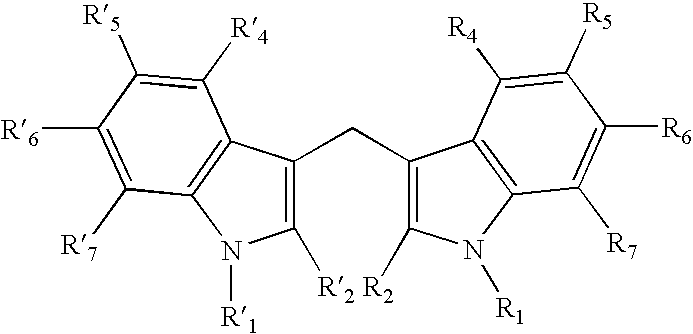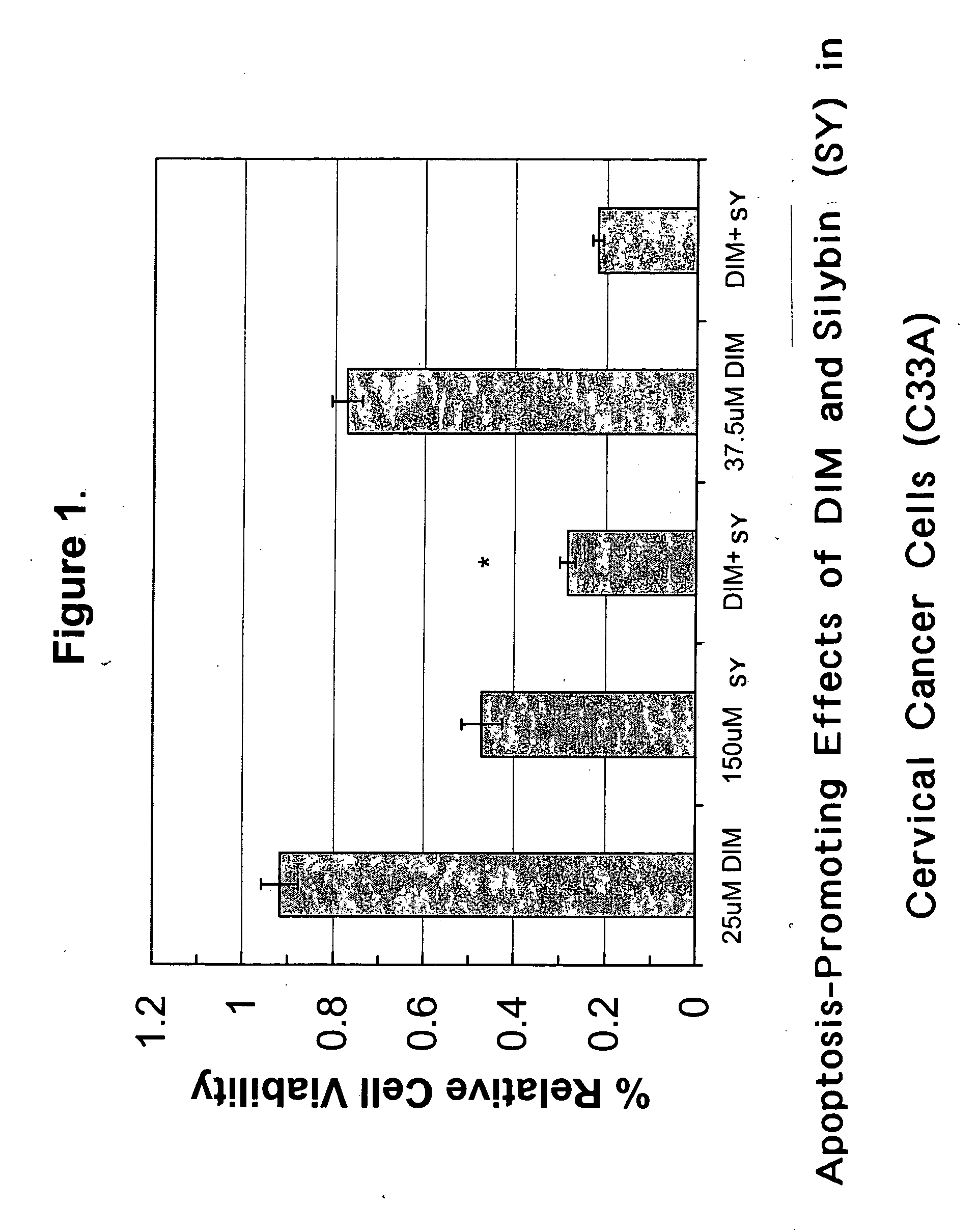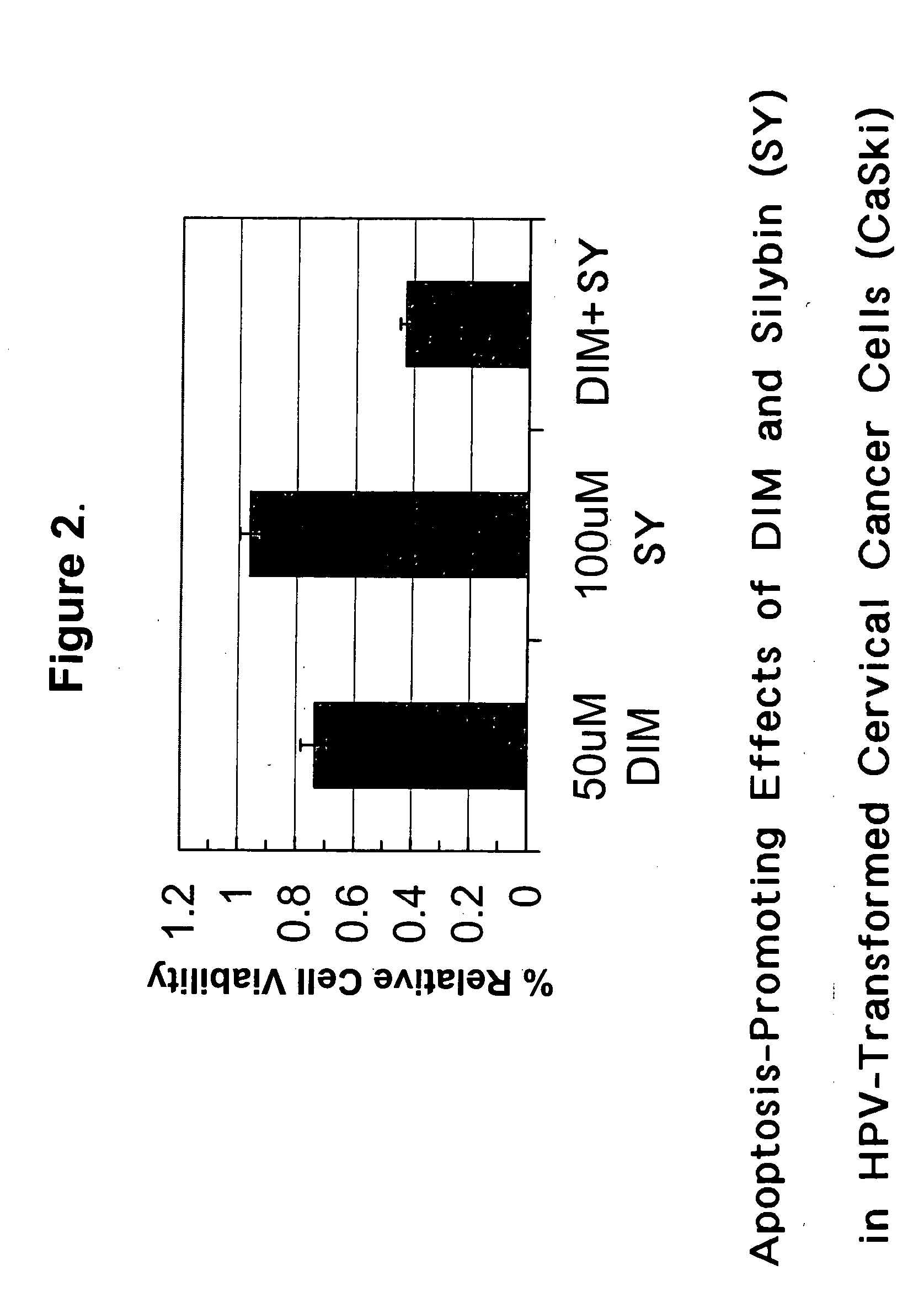Combined use of cruciferous indoles and chelators for the treatment of papillomavirus-related conditions
a technology of cruciferous indoles and chelators, which is applied in the direction of biocide, plant/algae/fungi/lichens ingredients, peptide/protein ingredients, etc., can solve the problems of inability to detect papillomavirus, etc., to achieve better options for prevention and treatment, avoid papillomavirus
- Summary
- Abstract
- Description
- Claims
- Application Information
AI Technical Summary
Problems solved by technology
Method used
Image
Examples
Embodiment Construction
[0043] As used herein, an "iron / zinc" chelator refers to a chelator which has affinity for iron, zinc or both. An iron / zinc chelator which has affinity for both iron and zinc need not have the same affinity for both.
[0044] The present invention is based upon the observation that living cells are sensitive to iron / zinc status and can respond to induced changes in trace metal activity with cell death. Papillomavirus infected cells are similarly sensitive to both alterations of iron / zinc activity and the presence of cruciferous indoles, for example, DIM or its active metabolites. Without being bound by theory, the intracellular presence of cruciferous indoles combined with altered intracellular activity of iron and / or zinc reverses the effects of growth promoting papillomavirus oncoproteins and forces dividing cells back into programmed cell death, or "apoptosis".
[0045] Apoptosis is a primary biologic defense in response to viral infection and pre-cancerous cellular damage. Creation of...
PUM
| Property | Measurement | Unit |
|---|---|---|
| time | aaaaa | aaaaa |
| time | aaaaa | aaaaa |
| time | aaaaa | aaaaa |
Abstract
Description
Claims
Application Information
 Login to View More
Login to View More - R&D
- Intellectual Property
- Life Sciences
- Materials
- Tech Scout
- Unparalleled Data Quality
- Higher Quality Content
- 60% Fewer Hallucinations
Browse by: Latest US Patents, China's latest patents, Technical Efficacy Thesaurus, Application Domain, Technology Topic, Popular Technical Reports.
© 2025 PatSnap. All rights reserved.Legal|Privacy policy|Modern Slavery Act Transparency Statement|Sitemap|About US| Contact US: help@patsnap.com



